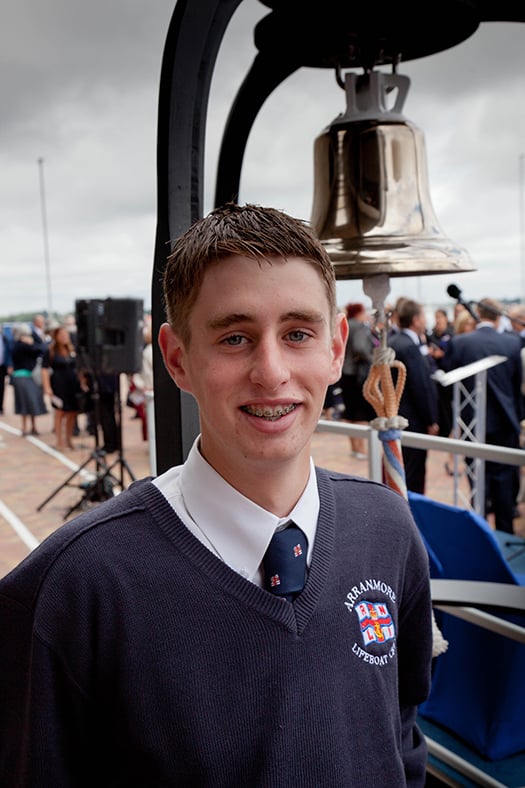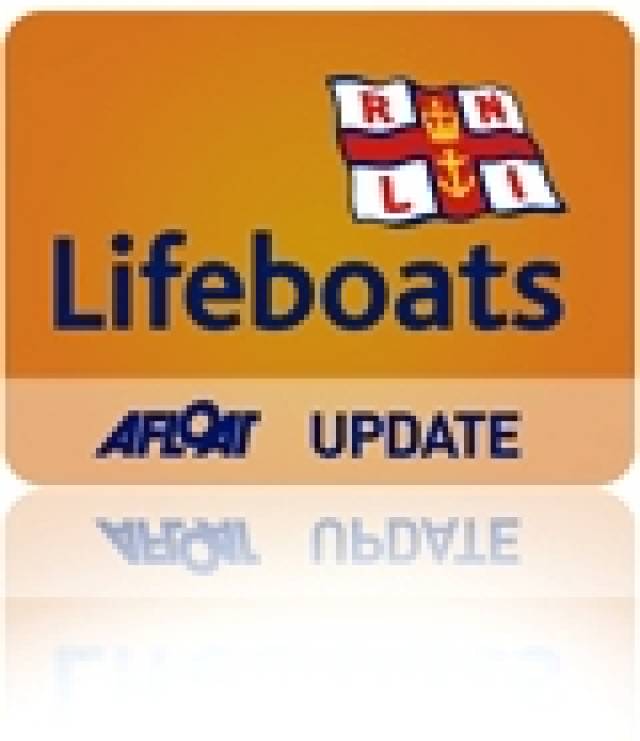#lifeboat – The Royal National Lifeboat Institution (RNLI) officially opened its new All-weather Lifeboat Centre at the charity's headquarters in Poole, Dorset today, with the two youngest fully-qualified lifeboat crew ringing a bell as the doors of the new building rose for the first time. Donegal teenager John McDermid (18) from Arranmore RNLI and Caryl Jones (20) from Porthdinallaen RNLI in Wales were the two people who represented the volunteer lifeboat crews across Ireland and the UK. The bell will be rung every time a newly built all-weather lifeboat is launched from the centre to be sent to a lifeboat station.
The All-Weather Lifeboat Centre was commissioned by the RNLI trustees to meet future all-weather lifeboat supply. Its completion will secure a supply of all-weather lifeboats (ALBs) for future generations of lifesavers.
Donegal teenager John McDermid has been a volunteer lifeboat crew member with Arranmore RNLI since he turned 17 last year and recently received his Leaving certificate results. He joined the crew of the Arranmore lifeboat as he wanted to continue the family tradition of volunteering with the lifeboats. His grandfather was a Coxswain on the lifeboat and the teenager joined up as soon as he was old enough.

Donegal teenager and Arranmore volunteer lifeboat crewmember John McDermid pictured at the opening of the RNLI All-Weather Lifeboat Centre at the charity's Headquarters in England
John travelled to Poole with is mother Donna and sister Abby, along with his aunt and uncle Nicola and Martin McBride.
Speaking after the ceremony John said; 'It is a huge honour to represent the volunteer lifeboat crew all across Ireland and the UK, along with Caryl. This is my first time to visit RNLI HQ and it is great to be here for such a big occasion. Our station's future lifeboat will be built here.
I know my grandfather would be very proud of me today and while I know he couldn't have imagined the changes to the RNLI, especially with technology and training, it still remains at its heart the same charity that saw him volunteer to help save lives at sea. It is a very proud day for me and my family.'
Phil Coulter's Lifeboat Anthem 'Home from the Sea' was played to mark the occasion and RNLI Chief Executive Paul Boissier addressed the 500-strong gathering saying: 'Since the turn of the century, the RNLI HQ site has changed beyond recognition. We built the RNLI College – for the training and accommodation of our lifesavers. We built a support centre to store and supply the many parts and materials we need to keep the charity going. And we unveiled a memorial dedicated to all those who lost their own lives at sea, while trying to save others.
People pass that memorial every day and see the motto of our founder, Sir William Hillary: 'With courage, nothing is impossible.' And that's hugely appropriate when you think of the courage that our lifeboat crews and lifeguards show – the people who brave the worst of conditions to save lives.'
The All-weather Lifeboat Centre is an investment in lifesaving for generations to come and craft that will be built and maintained in this centre will safely bring them home from the sea, back to their loved ones.'
The new All-Weather Lifeboat Centre will allow the charity to build six Shannon-class lifeboats a year and maintain the other all-weather boats. Having a state of the art facility which will see the charity produce, maintain and refit all-weather lifeboats in-house and under one roof is a first for the charity.'
The building itself includes the following features : 3 spray booths used to apply primer, coats of paint and antifoul to the lifeboats, Moveable platforms which will improve ergonomics and efficiency for accessing fit-out and refit lifeboats and a visitors centre allowing members of the public to watch the charity's lifeboats being built. In addition to this PV panels on the roof of the ALC combined with the PV provision on the rest of the RNLI campus means that up to 8% of the RNLI's energy requirements can be provided by the sun.































































